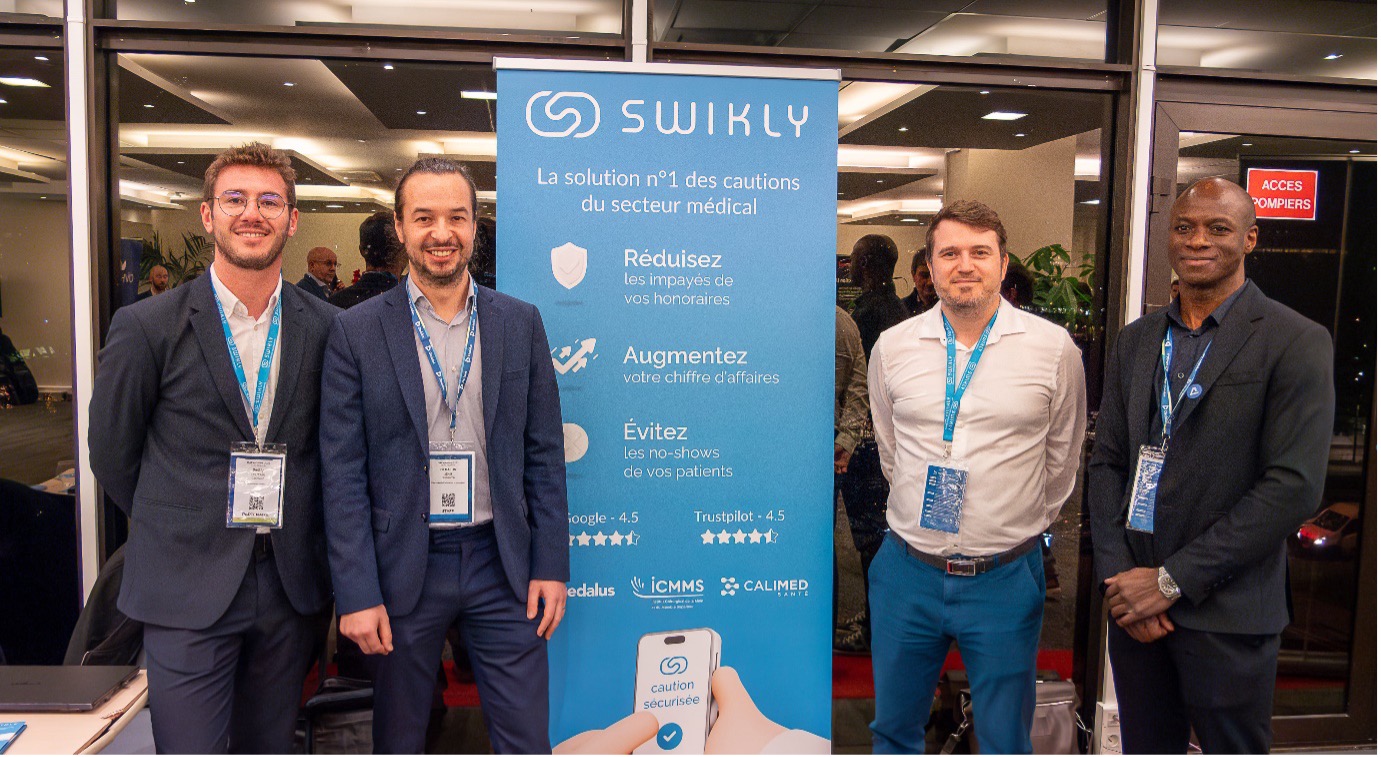The Vacation Rental World Summit, held on October 10 and 11, offered the vacation rental industry a new perspective on the post-Covid era. In this context, we animated a conference on the emerging travel trends that tend to become more permanent. Discover in this article how to adapt your offer to these new trends!
The Staycation
What is it?
As the world moves towards a new normal, the concept of staycation, an easy-to-plan, locally-based short break, is taking hold.
The concept was born out of adapting to fluctuating travel restrictions and has indeed built a solid foundation for the months to come.
Why this trend?
This trend will continue to grow as demand for air travel declines. Travel restrictions are also likely to continue for an unknown period of time. Finally, the genesis of staycations has proven to many that short, local trips are just as exotic as the usually popular postcard destinations.
Travellers are looking for a renewed authenticity in the rediscovery of their country and region.
How to adapt your offer?
Publish inspirational media
Make sure the photos or videos you use truly enhance the image of your business. Use professional footage and shots on your site in conjunction with more authentic moments captured in the moment. Ask your guests for permission to post and share the best shots and images of your property on Facebook, Instagram and Tweeter to highlight their experience! In fine, produce a social media strategy that highlights the best social media platforms to reach your audience.
Simplify your direct booking process
Study your traveler's buying journey on your direct booking channel and adjust it to make it as simple and smooth as possible. You can even consider generating bookings directly from your social networks. There are many seamless technologies to help you do this!
Adapt to local events
Anticipate and plan your promotional operations and communications around local events that have broad appeal to your targets. For example, you might offer a city centre getaway in the middle of a heat wave or promote an event taking place near you. Keep in mind that organizers and attendees are all easy to target via social media and event sites.
Collaborate with your local ecosystem
We can't stress this enough: Your guests will most likely visit other places during their stay at your property. Restaurants, bike rentals, farm co-ops or other activity providers. Support each other on social media and share your digital expertise. Frequently update your website with accurate and engaging content that reflects what you have to offer, while also highlighting other unique experiences visitors can expect to discover on your doorstep.
Build a unique experience
It is not enough to feel at home when travelling. Without the change of scenery of a long journey, it is essential to be transported to the smallest detail. Your value proposition must not be bland! Offer an experience that will give you an edge over the usual mass tourism destinations.
Invite a nano-influencer
Use these smaller, but better aiming influencers! Micro-influencers are more credible than macros. Because of the size of their community, they have a close relationship with it, comparable to short circuits or direct sales compared to mass distribution. Their communications are more effective, and they generate greater involvement from subscribers, who are already qualified because of the niche targeted by the nano-influencer.
Keep in mind that some of your key messages and what makes you unique need to be adjusted to make the most of the current staycation trend: What does your audience want to hear most and why are they choosing to travel closer to home?
The flexcation
What is it?
The concept of flexcation has also emerged in response to the pandemic and the resulting changes in our life patterns. The democratization of telecommuting and travel restrictions during traditional holiday periods have led to a shift in travel schedules for many. This increased flexibility allows employees to combine work with leisure travel. Ultimately, because these trips often take place out of season, the overall cost is much lower than a traditional vacation.
Why this trend?
Due to flexible work and school schedules, flexcations are the most likely to become entrenched in the post-covid tourism landscape.
Teleworking tends to be defined as a new norm for many, and this will result in a consolidation of new travel habits such as flexcation.
How to adapt your offer?
Offer a quality wi-fi connection
Since travelers will likely incorporate their telecommuting hours into their stays, it's imperative that you provide them with quality Wi-Fi to give them an ideal work experience.
Highlight nearby activities
Because these trips tend to last longer than traditional stays, your guests will expect to discover many activities when choosing their destination. In addition, because of the time constraints of telecommuting, ease of access to these activities will be an undeniable criterion of choice for your travelers.
Adopt an aggressive pricing strategy
In order to meet this new demand while fairly assessing the value of your offer, you will need to adapt through a dynamic pricing strategy as you are probably already doing on your OTAs. Since most flexcation travel takes place in the off-season, you will need to adapt your usual pricing to this growing demand.
Offer a unique experience
Finally, you must present a unique offer that will distinguish you from the mass tourism landscape, while offering a sufficient change of scenery to your travellers in their daily work context. There is no miracle recipe, rely on your assets and your uniqueness to create an unforgettable experience!
Digital nomads
Who are they?
Digital nomads are remote workers, freelancers or entrepreneurs who have the freedom to work anywhere in the world. All they need is a laptop and a decent internet connection, which allows them to move from one place to another whenever they want. They travel the world, settle in one city for a few weeks or months, and then move on to the next destination.
By 2035, there will be 1 billion digital nomads in the world.
PIETER LEVELS
Why this trend?
In essence, digital nomads are workers whose activities only require an Internet connection. While this model was mainly adapted to freelancers or digital entrepreneurs, the generalization of telecommuting allows more and more workers to become nomads.
Ultimately, the overall trend is that workers are hungry for freedom and flexibility and the nomadic model is one of the most appropriate responses to this.
How to adapt your offer?
Present your accommodation as a place of work
Because of the travel objectives of these special guests, you need to promote your properties differently. After all, they don't choose a property to live in so much as to work in!
As a result, you need to showcase the office capabilities of your spaces. This can include photos of well-lit offices, for example. Obviously, you also provide good WiFi.
Offer discounts for nearby activities
In the same way as flexcationers, digital nomads need to adapt their activities to their working schedule. It is therefore an interesting differentiation axis to propose reduced rates to local activities adapted to traditional working hours such as an Internet café, bars, a cinema or a theatre.
Refer your accommodation on specialized websites
The best way to promote your property in this niche is to get listed on dedicated platforms like NomadX. Plus, this listing helps you generate direct bookings!
Partner with a coworking space
Finally, a collaboration with a local coworking space is the ultimate value proposition to offer your guest!
Micro-adventures
What is it?
These are adventures that should be short, easy to set up, and they should be close to where you are staying.
Like an espresso shot: you get the maximum taste, effect, impact in this short, condensed burst of adventure.
ALASTAIR HUMPHREYS
Why this trend?
Micro-adventures appeal to hyper-connected city dwellers who want to slow down their lives by taking short but intense breaks adapted to their busy schedules. The search for authenticity mentioned above is again one of the impulses of this trend, showing a desire to stay away from mass tourism. Finally, there is an ecological awareness in contradiction with air travel, as represented by the term "flygskam" which describes the shame of travelling by plane in Swedish.
How to adapt your offer?
Tailor your services to adventurers
In order to appeal to travelers looking for new micro-adventures, you need to tailor your services to their activities. For example, you can change your arrival and departure schedule to match the requirements of a popular nearby adventure.
Promote micro-adventures
The promotion of micro-adventure paths around you is the easiest way to attract micro-adventurers. Find out what adventures your travellers can expect: offering them to discover them is an undeniable added value to stand out!
Get referenced
Again, since you are addressing a niche, you need to be listed on specific platforms to better reach your audience.
Collaborate with guides and/or equipment manufacturers
Working with local guides and equipment rental companies will help your travelers prepare for their adventure, making their planning easier than they could have imagined.
Ultimately, the watchword of these new trends is to offer a unique experience far from the beaten track of mass tourism to allow your travelers to be changed in all simplicity: Capitalize on your assets but especially those of your ecosystem!




